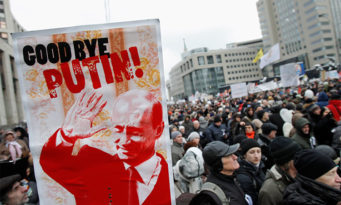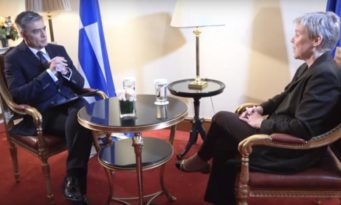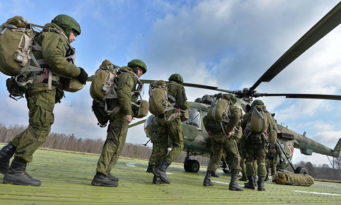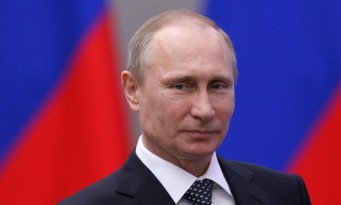Saudi Arabia – Iran: Towards an escalation?
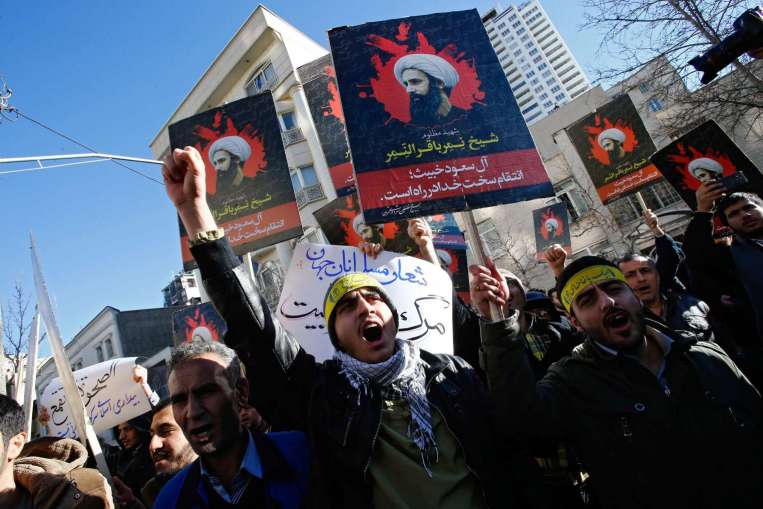
- By defencematters
As Saudi Arabia cuts diplomatic ties with Iran after the execution of Nimr al-Nimr will there be an escalation between the two ?
Andrej Matisak
As Saudi Arabia cuts diplomatic ties with Iran after the execution of Nimr al-Nimr will there be an escalation between the two and if so in which form will this escalation take place? Could it be that in the end cool heads will prevail on both sides? We asked some experts on the Middle East for their opinion and this is what they said:
- Amin Saikal, University Distinguished Professor, Director, Centre for Arab and Islamic Studies, Australian National University
The rupture of relations between the Sunni Islamic Kingdom of Saudi Arabia and the Shia Islamic Republic of Iran is a serious development. This is the first time that it has happened since the establishment of the Iranian Islamic regime 36 years ago. It underlines the deterioration of their ties to the point that could result in intensification of sectarian and geopolitical rivalries between them and deepening of sectarian divisions within the Muslim world. Both sides may now engage in intensifying their proxy conflicts in Iraq, Syria, Yemen, and Lebanon, although Bahrain is also on the Iranian radar. This means a further complication for securing a resolution of these conflicts and bringing stability to a very volatile region. What is now urgently needed is a three way summit between the three main regional actors, Saudi Arabia, Iran and Turkey, backed by the five permanent members of the UN Security Council to reach a regional/international consensus on a resolution of some of the conflicts that have dogged regional stability and security. The push for such a summit would need to come from the two main supporters of Saudi Arabia and Iran: that is the United States and Russia respectively. This is not something that could easily materialise in the present climate, but that what is required.
- Fanar Haddad, Research Fellow, Middle East Institute, National University of Singapore
It has been a very unfortunate start to 2016. Resolving the conflict in Syria – and to a lesser extent the conflict in Iraq – require (amongst many other things) some form of Saudi-Iranian rapprochement. Unfortunately this now seems more distant than it already was. While Saudi-Iranian relations were rarely if ever a cause for optimism over the past 5 years the severing of diplomatic relations is undoubtedly a new low. This will have a negative impact on the upcoming Syria negotiations and on general sectarian entrenchment in the Middle East. It seems that we are set for a hardening of positions and a continuation of conflict. How much human suffering must pass before cooler heads prevail is anyone’s guess.
- Ben Rich, PhD Candidate, School of Political and Social Inquiry, Monash University
There are multiple dimensions to the meaning of the execution and the contexts it is being perceived in. My gut tells me that the primary intended audience was the Saudi public, not rival Iran. If we look at the behavior of Riyadh since the protests of 2011, we see a state highly paranoid of any sort of outspoken domestic political confrontation. The most volatile groups in this regard at this stage are the militant Sunni Islamists sympathetic to ISIS and its contemporaries, as well as the Saudi Shi’a. If we take a glance at who was executed by the state, we see representations of both these groups. Essentially, the state is signalling to any potential dissidents from these camps that it is more than willing to employ capital reprisals to quash their voices. This stepping up of responses has been something we have been seeing over the last few years, with recent counter-terrorism laws actually labeling many forms of political activism as ‘terrorism.’ Whether this will be an effective tactic, or serve to further stimulate the grievances underlying these groups, remains to be seen.
At the regional level, this is just the latest manifestation of the ongoing rivalry between Riyadh and Tehran. Since 2011, both states have been engaged in proxy conflict in Syria and more recently in Yemen. This competition is not new, and Saudi foreign policy has focused on preventing the emergence of a Middle East hegemon since inception – Iran is just the latest perceived threat in this regard. Nevertheless, the rivalry has been more heated and worrisome since 2011, which saw both states trying to exploit the Arab Spring to advantage against one another. Within this, both countries will always seek to critique the other on any perceived failings or violations of human rights, so as to harvest political capital domestically and consolidate their hold over their respective national populations. Ramping up the firey Jingoistic rhetoric towards geopolitical rivals – be that the Saudis, Iranians, Israel, America, Britain or France – is always a good way to get your citizenry focused on the external and not overly critical of the domestic failings of the regime (don’t forget, the Iranians execute and imprison plenty of political dissidents). We saw this last year after the mass-deaths during the Hajj and we will undoubtedly see it again. While the storming of the Saudi embassy in Tehran is a dramatic event, this is actually a fairly common tactic that the Iranians employ these days in response to political tensions. While there will be a lot of chest thumping and sabre rattling around it, I doubt that there will be major direct escalation around it outside the diplomatic realms; not when we have much more serious security confrontations occurring in Syria and Yemen without major direct escalation between the two.
In regards to potentially ramping up efforts in the proxy-realm, Iran is already pouring considerable resources into supporting Assad in Syria against Saudi-backed militias and it is debatable whether they can viably do much else, especially now that Russia has taken on considerable amounts of the heavy lifting in the Levant. Similarly, their support for the Houthis in Yemen is severely curtailed at this stage by the blockade imposed by the coalition navy in the region. Despite the hand wringing of many western analysts, Iran is not in the business of direct military confrontations and never really has been, so I don’t think it is very likely that such a relatively minor event would lead to such an event. The same can generally be said for the Saudis, although it is clear that since ascending the throne that Salman has adopted a remarkably muscular Saudi foreign policy relative to his predecessors.
- Daniel Varisco, Research Professor, Social Science, Qatar University
My views are colored by my knowledge of the history of Saudi relations with Yemen. Let me give some background on that, since I think it is relevant to interpreting the current rhetoric against Iran. In 1934 the Saudi king Abd al-Aziz took control of Asir and Najran, two areas more closely associated with Yemen historically, and invaded Yemen proper. The British intervened, as well as the resistance from Yemenis, and a settlement was made, although it did not really identify the agreed upon borders. After the revolution in the north that toppled the Zaydi imamate, the Saudis supported the desposed Imam Badr during a lengthy civil war in which Nasser supported the new regime; this was before the British pulled out of Aden. Since that time the Saudis have been actively involved with North Yemen, providing much development aid since the 1970s, especially in education. Many of the foreign teachers coming into Yemen were Brothers, who did not agree with Zaydism, nor were they accepting of the traditional Shafi’i views in the south or the Sufis. After 1980 a Yemeni salafi named al-Wadi’i established a madrasa in Dammaj, in the heartland of the Zaydis, and preached against Zaydism. It is important to understand this influx of salafism and in 1990 after unification the political party Islah — a Muslim Brotherhood clone – was established in the north. This background places the rise of the Huthis in context. The Saudi insistance that the Huthis are an Iranian attempt to create a Hizbollah-like puppet in Yemen are highly exaggerated. The Huthis were mainly against Salih’s regime and its American support, rather than Saudia. So I would argue that until the Arab Spring, when Salih was forced out of office, the idea of a Sunni/Shi’a divide had been created by Saudi Salafi intrusion but was mainly one-sided and politically framed.
Regarding the Saudi rhetorical attacks on Iran, I think it has taken a new dimension that is overtly political. Saddam played to the fears of the Saudis and other Gulf Arabs in his invasion of Iran, but to say that he was going against Iran because it was Shi’a would be nonsensical. However, the fact that Saddam was supported and aided by Saudi and Gulf money clearly angered the Iranians and fed into the rhetoric of their more conservative clerics. But let’s face it, the origin of this Sunni/Shi’a antagonism has always had a political dimension and it is no different today. The new dimension, I suggest, is the need of the new Saudi king Salman to bolster his power by creating the Shi’a as an enemy taken over by Iran, which is not the only type of Shi’a. The Zaydi, as are the Ismaili, are not twelver and the Zaydi in particular came close to the Sunni schools. The influence of Iran on the Huthis has primarily been political; the Huthis are not becomiong twelve and indeed the father Badr al-Din wanted to return to an earlier form of Zaydism; nor are the Huthis the only interpreters of Zaydi thought in Yemen. But look at where the Saudis are supporting groups. They are against Hizbollah, which ironically was created to defend Lebanon from Israel and not to start a Shi’a/Sunni war; they are against Asad and have supported jihadist groups just because they are against Asad (as has Erdogan in Turkey). The problem is that there are elements in Iran promoting the expansion of their view of Islam, just as the Saudis export their salafism, but these efforts are politically motivated to ensure that whoever is in power stays in power on both sides. I think that the Saudi-led war on Yemen, which is clearly a proxy war that has generated an intense civil war, is a political move to confront Iran, as is the killing of Shaykh Nimr, without actually attacking Iran militarily (which would be foolhardy). I suspect that the Saudis expected a quick victory but their intense bombing campaign, supplied by the US and Britain and others, has not resulted in any kind of victory, although creating a desperate humanitarian crisis in Yemen, the worst in memory and perhaps in history.
To answer your question directly, I think we will see an escalation of the proxy war, but mainly in rhetoric and cracking down on internal dissent. The Saudi coalition is mired in Yemen, just as Egypt was in the 1960s. Even if the Huthis were removed, Ansar Shariah, the Hirak movement and ISIS would never accept Saudi control. There is nowhere else for the Saudis to physically attack, which may explain why they are so desperate to find some kind of victory in Yemen. In a sense by killing Nimr they have given the Shi’a everywhere a martyr; this is the same problem created by Salih killing Husayn al-Huthi and making him into a martyr. Iranian Shi’ism, in particular, thrives on martyrdom, so killing Nimr is really a destabilizing act. It also brings world attention to the fact that the Saudis behead people (even though they are not alone) and this will be negative. With oil prices so low and budget deficits hitting Saudi Arabia, there is likely to be a rise in local discontent andnot just by the Shi’a population. I think that by its unsuccessful campaign in Yemen and this making of a martyr, the Saudis have made a major mistake for their own stability.
- Naser Ghobadzadeh, Research Fellow, Institute for Social Justice, Australian Catholic University
Cutting diplomatic ties is, per se, escalation of a tension that has started at least from the inception of the Islamic Republic of Iran. Politico-religious competition between Iran and Saudi Arabia — in charge of Shiite fundamentalism and Sunni fundamentalism respectively — started when Saudis allied with US to contain the influence of Khomienism in the Muslim world. In response to the success of the Shiite version of political Islam in Iran, Sunni political Islam evolved into a transnational jihadi movement, commencing its mission in the early 1980s in Afghanistan. Sponsored by Saudi Arabia and supported by the US, the jihad against the USSR gave birth to Al-Qaeda and its global jihadi mission. Thus, since the closing decades of the 20th century, there has been a binocular — or somewhat covert — sectarian rivalry between Saudi Arabia (Wahhabism) and Iran (Khomeiniism) that has generated bilateral interaction between sectarianism and political Islam. Subsequent to developments in Iraq, the hitherto relatively covert rivalry between Iran and Saudi Arabia erupted into blatant confrontation. The restoration of Shiite power in Iraq further disturbed the balance of power in the region. Sunni powers felt threatened by the Shiite gains, which heightened the geopolitical tensions among the regional powers, i.e. Iran and Saudi Arabia. This was, somehow, the beginning of a trend, which is changing balance of power to the benefit of Iran. In particular, the nuclear deal and possible rapprochement between Iran and West in general, and US in particular, depict a not-promising future for Saudis regional and international position. This may offer an explanation for Saudi’s regional policies over the last few years which are geared to trigger an interruption in this trend. But the ruling clergy in Iran have proven to be pragmatic in their foreign policy, for which ideology has been used as an instrument whenever/wherever it was needed. This is why I will be very surprised if Iran engages in a radical form of policy such as full-scale war. The current direction in which the balance of power leads serves the interest of Iran’s ruling clergy. However, increasing tensions, in particular, proxy wars in Syria and Yemen is a more likely. Another battle ground that Iran’s leaders may consider to reactivate against Saudi Arabia is the Shiite insurgency in Bahrain, yet it is highly sensitive area for Saudis and Iran would be more cautious in playing that game.







